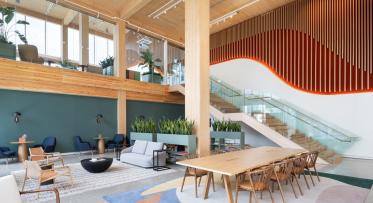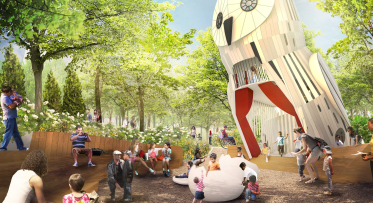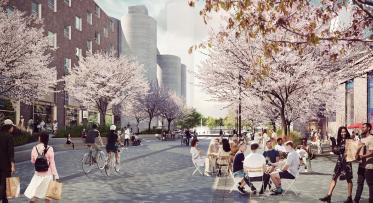Lower Yonge Update: Planning a New Waterfront Precinct
Waterfront Toronto and the City of Toronto are creating a Precinct Plan to guide the development of a new waterfront neighbourhood at the foot of Yonge Street.
POSTED: AUGUST 7, 2014
BY: SAMANTHA GILENO
On August 12, Waterfront Toronto and the City of Toronto will provide an update on the Lower Yonge Precinct Plan to Toronto and East York Community Council. For context, a Precinct Plan is a planning document that helps ensure that future development occurs in an appropriate way for the waterfront. To date, three Precinct Plans have been approved by City Council for the waterfront: the East Bayfront, West Don Lands and Keating Channel Precinct Plans.
The Lower Yonge Precinct is one of the last parcels of land outside of the Port Lands with signficant development potential in the Central Waterfront. This post-industrial area is located beteen Yonge Street and Lower Jarvis Street south of Lake Shore Boulevard and north of Queens Quay. The site is currently home to the Toronto Star building, several parking lots, the LCBO warehouse/store and a Loblaws. A development application has been submitted to the City by Pinnacle International for the Toronto Star site (1-7 Yonge Street). The City’s review of the application is pending the outcome of the Lower Yonge Precinct Plan work.
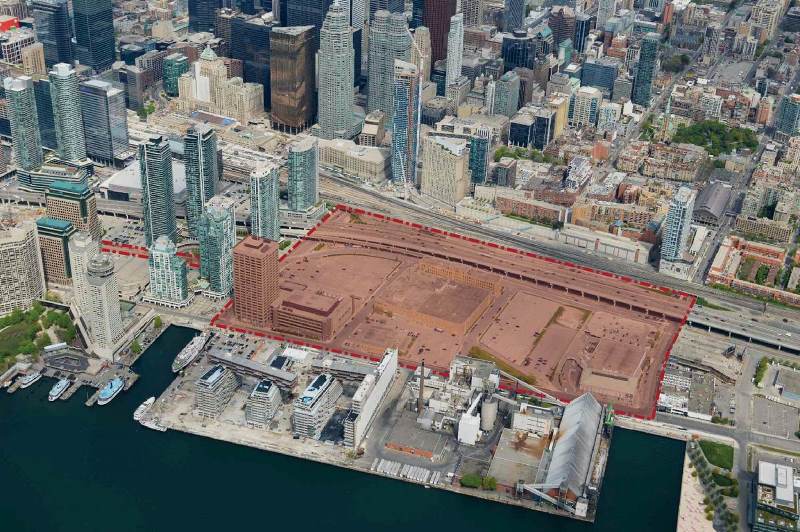
The Lower Yonge Precinct is an approximately 12-hectare area at the heart of Toronto’s transforming Central Waterfront.
Over the past year, Waterfront Toronto and the City of Toronto have completed two studies which create the foundation for the Lower Yonge Precinct Plan: an Urban Design Report: Principles and Recommendations and a Transportation Master Plan Environmental Assessment (Phases 1 and 2). These studies – which were guided by comments from stakeholders and members of the public – set out a structure for the revitalization of the Lower Yonge precinct. They create a plan for streets and blocks, public space and the height, placement and size of new buildings in the area. In other words, they help us understand what the neighbourhood will look and feel like – and what it will be like to move through it. Below are two artist renderings showing how the Urban Design Principles and Recommendations and Transportation Master Plan would translate on the ground as development proceeds in the area.
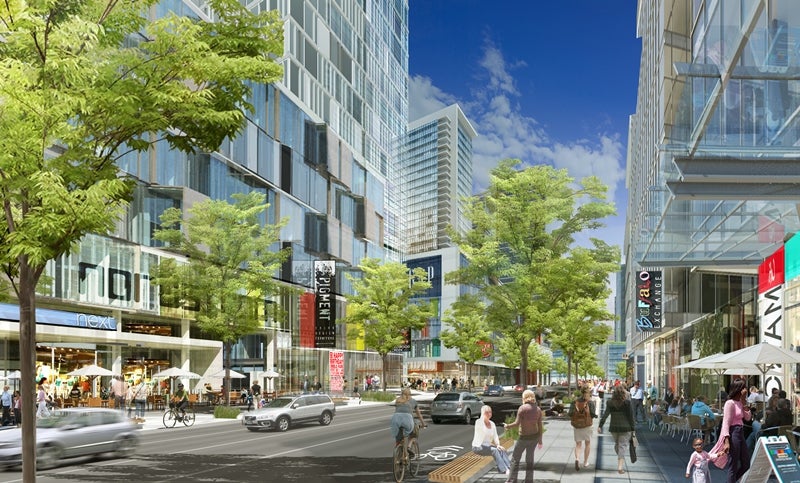
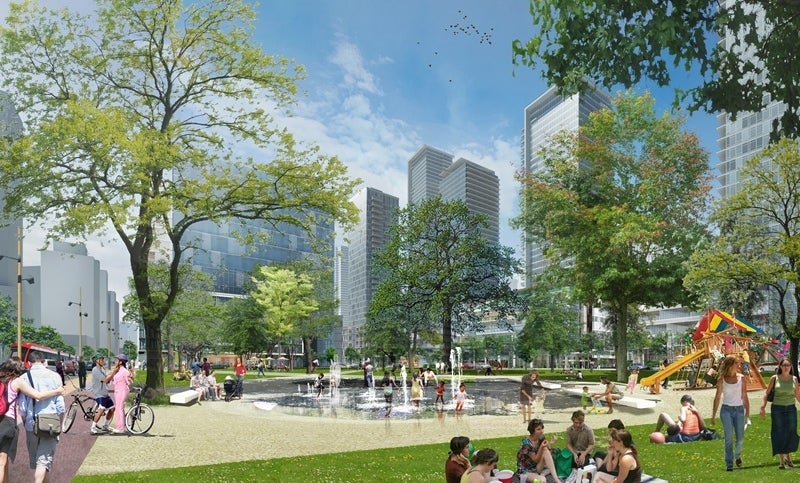
Planning for a new two-way, extended Harbour Street and a large neighbourhood park
Creating a new waterfront neighbourhood requires careful attention to getting the right mix of uses within the development (both residential and commercial), a range of unit types, sizes, and affordability and the community services needed to support the neighbourhood. Over the next several months, City planning staff will work to finalize the Precinct Plan and the funding and implementation tools required to make the vision for the precinct a reality.
Next steps include further assessments to the required transportation and servicing infrastructure, community services and facilities. Staff will also complete heritage impact work and the phasing requirements for parkland, the road network and land uses. A public meeting will be held early next year to collect additional feedback on the Precinct Plan and provide the community with another opportunity to shape this new waterfront neighbourhood. The final Precinct Plan – and Official Plan Amendment – is expected to go to Toronto East York Community Council for approval next spring.
The full Urban Design Report: Principles and Recomendations and the Transportation Master Plan are now available in the "Related Documents" section of our website's Lower Yonge Precinct Planning page. Members of the public are welcome to provide comments to Toronto East York Community Council on August 12.
If you wish to submit written comments, please forward them to the City Clerk, attention: Rosalind Dyers, Administrator, Toronto and East York Community Council, 100 Queen Street West, Toronto, ON M5H 2N2, or by e-mail to teycc@toronto.ca
More information about planning the Lower Yonge Precinct can be found on the City's website.


